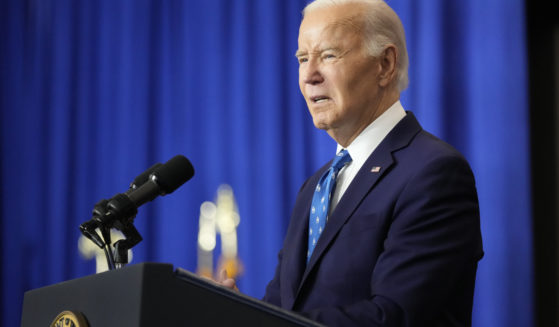2008 Crash All Over Again? Wall Street's 'Fear Gauge' Rises to a 4-Year High as Market Meltdown Gets Worse
Contagious panic swept through Wall Street on Monday, as fears of being blindsided by a recession sent markets spiraling downward. For many, it recalled the fervent panic that led to the 2008 recession.
What’s known on Wall Street as the “fear gauge” roared into the stratosphere Monday morning to 65.70 before receding to about 36 later in the morning, according to Fortune.
That’s still up from a reading of 23 on Friday and 12 at the start of the year.
That’s the highest the indicator has been since March 2020, when COVID-19 was leading to mass lockdowns.
“The immediate implication is that investors fear that the economy may weaken rapidly and want the Fed to cut rates aggressively to maintain economic growth,” Paul Christopher, head of global investment strategy at Wells Fargo said.
Major wars breaking out, the economy is heading into recession, the markets are crashing.
Who wants 4 more years of this?
— Wall Street Silver (@WallStreetSilv) August 5, 2024
The market plunge was not confined to the U.S.
The Nikkei 225 dropped 12 percent in Japan, the biggest drop in the country since 1987.
By mid-afternoon, the Dow Jones Industrial Average had fallen more than 1,200 points, according to CBS.
The S&P 500 dropped 2.4 percent while the Nasdaq Composite fell 2.9 percent.
“The main factor that has staying power is the economy’s slowdown,” Christopher wrote.
“Investors have been watching household financial stress build for the past two years, but during that time, job growth remained above its December 2009-December 2019 average of 180,000 new jobs per month,” he wrote, indicating the importance of a Friday jobs report that showed growth less than expected.
The sudden panic was “very, very unusual,”Joe Tigay, portfolio manager for Rational Equity Armor Fund, said, according to the U.K. Daily Mail.
“It was just too long of a period where stocks were going up and there was just the assumption that all they have to do is just wait, and then they’ll go higher at some point,” Tigay said. “At some point that snaps out of reality.”
Not sure if anyone needs a history lesson or not considering Wall Street, the Dow and the Nasdaq today…
Friday, October 18, 1929-Big drop in stock prices began
**Panic sets in 👈🏼(WE ARE HERE)
Thursday, October 24, 1929-12M shares traded while firms try to buy them up to… pic.twitter.com/zXqqY2Kh0x— SaltyGoat (@SaltyGoat17) August 5, 2024
Victoria Fernandez, Crossmark Global Investments chief market strategist, called the drop the “culmination of events that came together at the end of last week” including everything from a disappointing jobs report to tensions over a possible war in the Middle East.
She noted that investors are fearing that “maybe that soft landing is not a given and that’s why we are seeing the reactions we are.”
Truth and Accuracy
We are committed to truth and accuracy in all of our journalism. Read our editorial standards.
Advertise with The Western Journal and reach millions of highly engaged readers, while supporting our work. Advertise Today.












